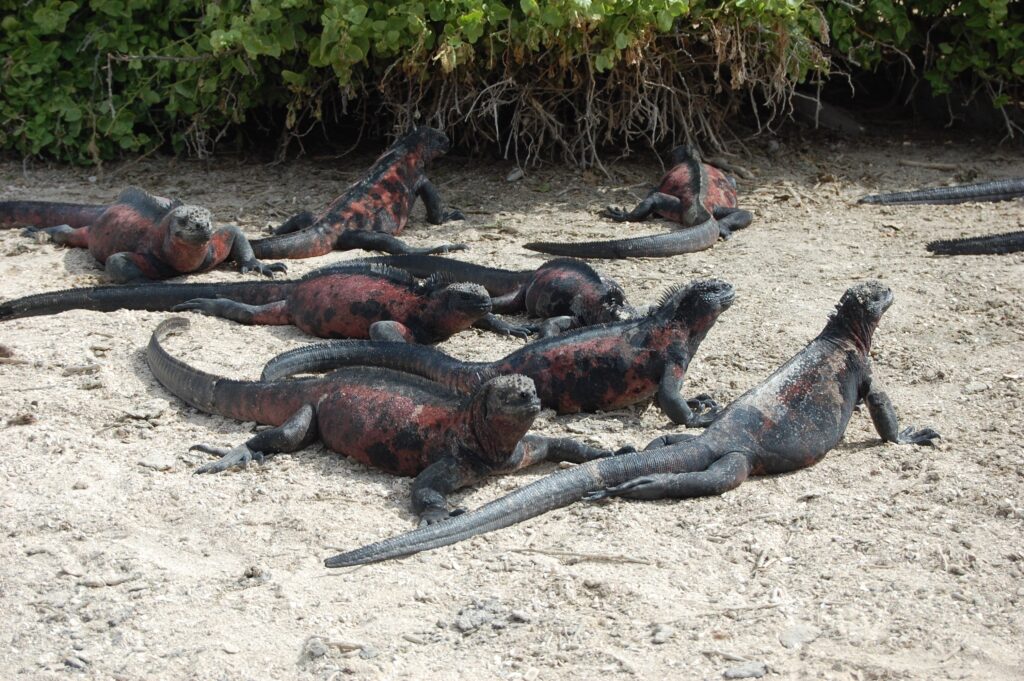It’s fairly common for animals to slow their metabolic rate or decrease their activity (and thus their need to eat) in response to a shortage of food. Galápagos marine iguanas, however, take it a step further by literally shrinking themselves so their bodies don’t require as much food. Scientists have taken note of this phenomenon usually taking place after El Niño events.
El Niño events are characterized by above average sea surface temperatures. This creates a strong warm surface layer in the surrounding ocean, which in turn decreases upwelling. This reduces the amount of nutrients available for phytoplankton, creating mass phytoplankton die-offs and significantly reducing the food supply for marine iguanas. The Galápagos islands are disproportionately affected by El Niño events because of their location, which happens to be right on top of the equator and directly in the path of where the Humboldt, Cromwell, and South Equatorial Currents converge.

In order to adapt to an environment with less food availability, the iguanas have to find some way to reduce their energy output so they don’t have to eat as much. In general, smaller iguanas need less food than large iguanas, so many individuals within this species opt to reduce their body size pretty significantly after El Niño events. The Galápagos iguanas can achieve this by resorption (the destruction and absorption of tissue into the body) of not only soft tissue but hard tissue such as bone. It’s been found that these animals can decrease their overall body length by 17% on average and their girth by about 12%.
Resorption can have very negative side effects if it becomes unbalanced. It is possible for bone to become more porous and brittle, making the iguanas more vulnerable to fractures or bone deformities. As El Niño events worsen and sea surface temperatures rise in general due to global warming, resorption and the negative consequences of it may become more frequent in the Galápagos marine iguanas. This is especially concerning considering that this species is currently listed as vulnerable on the IUCN Red List and that they are the only marine iguanas in the world, endemic to the Galápagos islands.

